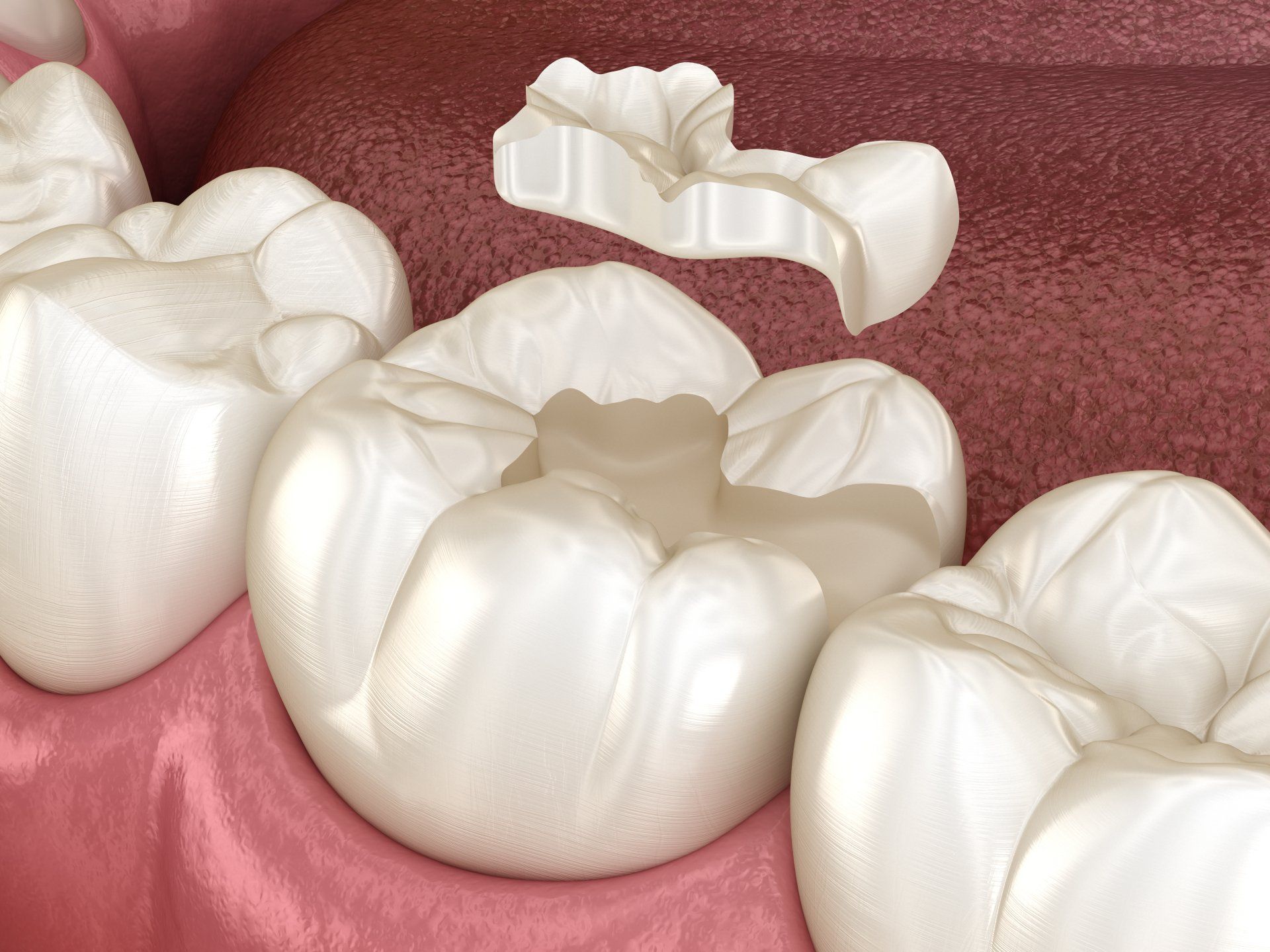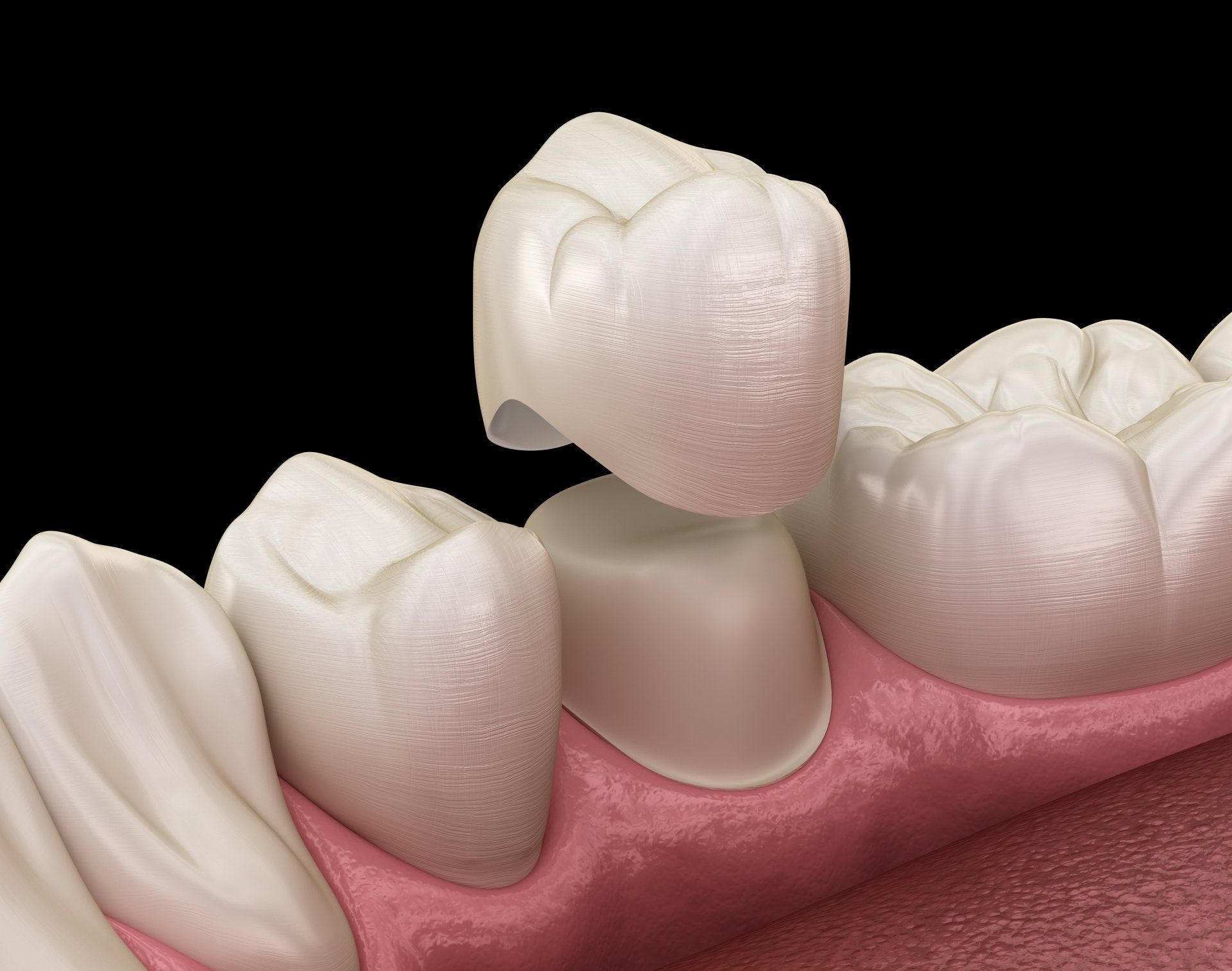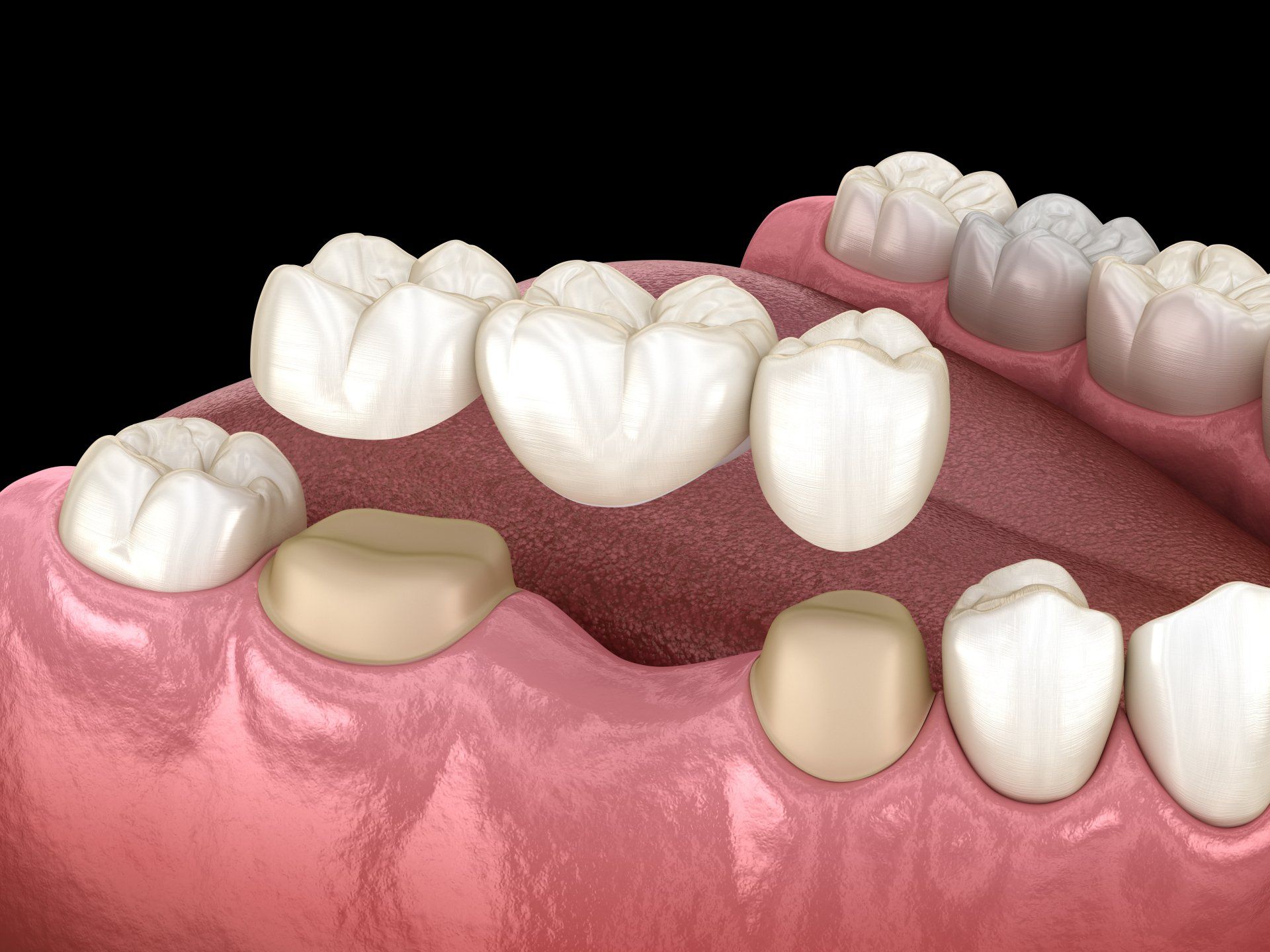Restorative Dentistry
From fillings to crowns and bridges, we will treat cavities with modern dental materials to give you a confident smile.
Tooth Colored Fillings

When enough tooth is remaining, we can use modern dental materials, called composite resins, to restore your tooth back to its original form. These resins are tooth colored, function immediately after placement, and last for years. They are the most common restorative procedure performed.
There are many reasons why you may need a filling. The most common reason is that new cavities, or decay caused by bacteria, have passed through the enamel of the tooth and into the inner layers of the tooth. Other reasons include broken or defective old fillings, cavities forming around old fillings, broken teeth, and the loss of tooth structure on the sides of teeth from abrasion and tooth grinding.
We will provide a local anesthetic to complete the procedure with minimal discomfort and then remove any defective or decayed portion of the tooth. An adhesive layer will be applied and cured, and then the resin material will be deposited, shaped, and cured. The filling will then be polished and refined to match your tooth and bite.
Crowns

When only a minimal amount of the original tooth is remaining or the tooth has a risk of fracturing, a routine filling is no longer adequate to preserve the tooth. Instead, a crown (also known as a cap) is required to preserve the tooth. This restoration is a totally encompassing shell of either ceramic zirconia, gold or cast metal, or metal with porcelain bonded to the outside for esthetics. This treatment is more involved than a traditional filling, however is very common and completed in our office routinely.
At your first appointment, we will provide a local anesthetic to complete the procedure with minimal discomfort. Any defective restoration or cavity will be removed from the tooth structure and replaced with what we call a "core buildup," or resin bonded filling, that restores the original tooth structure. The tooth will then be prepared and reduced in size for the material width of the crown. A final impression of the preparation will then be sent to our trusted and local dental laboratory to create your final crown. A temporary crown will be made and cemented to protect the underlying tooth structure.
At the second appointment, we will again provide local anesthetic if needed, remove the temporary crown, and evaluate the final crown with you. If it is to your satisfaction, it will be cemented into place permanently and adjusted as needed.
Bridges (Fixed Prosthodontics)

When teeth are missing either from extractions or other causes, a dental bridge is a great option to replace the tooth or teeth. By using adjacent teeth as "supports," a false tooth/teeth can be suspended between them in order to replace the ones that are missing.
The steps are identical to that of the "Crowns," which can be found in the column to the left. However, there will be multiple preparations involved with the bridge.
Cleaning around crowns and bridges is essential to perserve their longevity. It is commonly misunderstood that a crown provides an impenetrable surface that will never break down or have a cavity. Instead, a crown/bridge is susceptible to cavities around the edge, or margin of the preparation. As such, patients must find ways to clean next to and around all of their crowns/ bridges using either floss, floss threaders, proxabrushes, water picks, or air flossers. Without this daily hygiene, the significant time and investment into a dental crown or bridge can be compromised by new cavities, which will require revising or replacing the old crown or bridge restoration.


